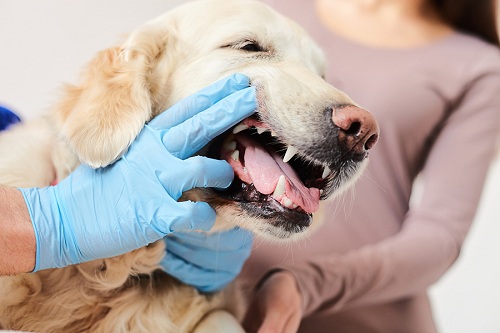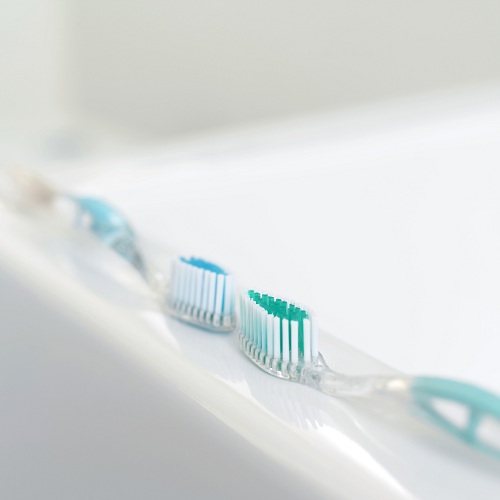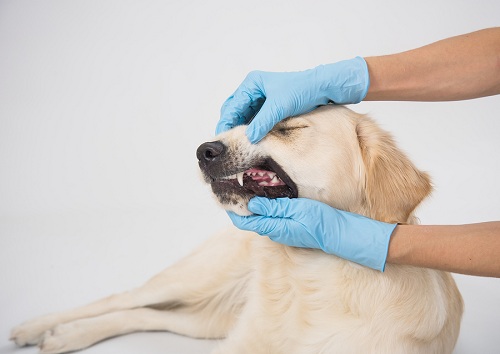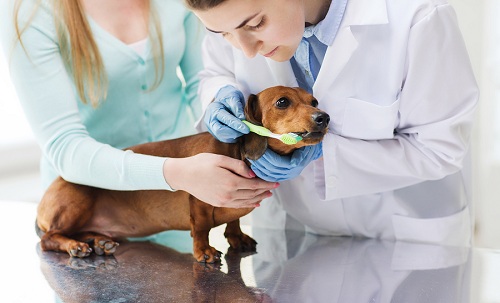How to Clean a Dog’s Teeth and Prevent Tartar | Ultimate Guide

Although dogs are not as prone to cavities as humans are, dogs can still develop problems such as gingivitis and plaque and tartar build-up, as well as bad breath, if their teeth are not kept clean. Just as it can with humans, dental problems in dogs can also lead to more serious illnesses, such as gum infections and kidney, liver and heart disease.
More...
Although your dog may not be too keen on having his teeth brushed, dog teeth cleaning and dog tartar removal with dog toothpaste is an essential part of keeping your dog fit and healthy. If you are not currently cleaning your dog’s teeth, here are some handy tips on how the clean a dog’s teeth.
I. 8 Easy Steps to Cleaning Your Dog's Teeth
1. Choose Your Moment
The best time to clean your dog’s teeth is when he is already looking calm and relaxed, especially if your dog has never had their teeth cleaned before. You don’t need to clean your dog’s teeth every single day, but regular brushing will help prevent the build-up of plaque and tartar
2. Use the right tools
To clean a dog’s teeth you will need dog toothpaste and a dog toothbrush. Dog toothbrushes are much softer than human toothbrushes and they are angled better to reach dogs teeth. You should also use proper dog toothpaste, too, because the flavours are designed to be more dog-friendly and some of the ingredients in human toothpaste can be poisonous to a dog.

3. Get in the right position
The best position for dog teeth cleaning and dog tartar removal is to sit or kneel in front of your dog or at his side. You should avoid standing over your dog or appearing threatening in any way or your dog will not cooperate. If your dog looks at all anxious, it would be better to leave the dog teeth cleaning until he has calmed down.
4. Test your dog’s reaction
Knowing how to clean dog’s teeth is as much about keeping your pet calm as it is about technique and it may take several attempts before your dog will let you clean his teeth at all. The first thing you can do to help get him used to having his mouth touched is to gently rub your finger along your dog’s gums. It can also be useful to let your dog taste the dog toothpaste before you try applying it with the dog toothbrush. If your dog doesn’t like the taste of the dog toothpaste, you may need to try some other flavours. If you find a flavour of dog toothpaste that your dog likes, he will eventually come to see having his teeth cleaned as a treat.
5. Brush in a circular motion
Once your dog has become comfortable with you touching his mouth and you have found a flavour of dog toothpaste that he likes, you can then try using the dog toothbrush on him. Lift up your dog’s upper lip and hold the brush at a 45° angle, pointing towards his gums and then brush the dog’s teeth, using a circular motion, and brush all the way up to the gums so that you can remove all the plaque. You may get some light bleeding at the edges of the gums, but that is perfectly normal. If you get heavy bleeding, however, it could be a sign of gum disease, so you should stop brushing and take your dog to a vet.

The veterinarian's hands check the teeth of a dog golden retriever. Dog with open jaws on a white background. Close-up clean teeth and healthy dog gums
6. Concentrate on the dog tartar removal
The main areas to concentrate on when you are cleaning a dog’s teeth are the outsides of the back teeth and the canines, which is where the plaque and tartar build up. Just work on a few teeth at a time and don’t force it if your dog starts to become agitated.
7. Keep reassuring your dog
Try to reassure your dog throughout the process and keep him calm. If you can make it seem like a game or a treat your dog will be far more receptive to having his teeth cleaned regularly. Never try to force your dog to let you clean his teeth, because that will make him afraid of having his teeth cleaned, which will just make the job even more difficult in the future.

8. End dog teeth cleaning with a treat
When you have finished cleaning your dog’s teeth give him a treat as a reward. That’s another way to make sure that he will sit still for his teeth cleaning next time. Making dog teeth cleaning and dog tartar removal fun for your dog will make the job a lot easier for you and a lot less stressful for your pet.
II. Other ways to keep your dog’s teeth clean
A dog toothbrush and dog toothpaste are not the only way to keep your dog’s teeth clean, there are other things that you can do that will help stop the build-up of tartar and plaque.

There are dog chews that you can buy that are specially designed to remove plaque from a dog’s teeth and many of them are flavoured, so dogs will think they are a treat. There are also synthetic bones and toys that are designed to do the same thing. You can also give your dog a natural bone to chew on and that would help get rid of some the tartar, but natural bones can be a bit messy, which is why many people prefer the toys and synthetic bones. Just be sure that whatever you do give your dog to chew is not too hard, or it may break your pet’s teeth.
III. How often do you need to have a vet check your dog’s teeth?
Cleaning your dog’s teeth at home with a dog toothbrush and some dog toothpaste will help prevent the build-up of tartar and plaque and that will help prevent gum disease, but it is still advisable to have your dog’s teeth checked by a vet about every twelve months. The signs to watch out for that might indicate there may be a problem with your dog’s teeth or gums include pawing at the face, bad breath, bleeding gums and a loss of appetite.
Conclusion
We hope this guide on how to clean a dog’s teeth has been useful. Regular dental hygiene is as important for a dog as it is for humans and if you don’t keep your dog’s teeth clean it could lead to some very expense treatments at the vets.
If your dog won’t let you clean his teeth, which is not unusual, you can ask the vet to do it for you and, in some cases, the vet may anesthetize the dog if the buildup of tartar is very bad. The best way to avoid that is to start cleaning your dog’s teeth when they are a puppy and then keep on cleaning his teeth on a regular basis from thereon in.
